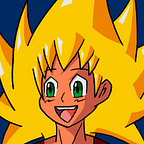Dreamcast Game #38: Samba de Amigo
サンバDEアミーゴ
Hello there, and today we’re talking about a rhythm game for the Dreamcast, released for the arcades and the Sega Dreamcast between 1999 and 2000: we call it Samba de Amigo! We’ve decided to go on a lighthearted route so we can wrap up the publication on Medium. The game draws on Latin American culture and its gameplay involves the player using controllers shaped like maracas to match a series of patterns displayed on-screen. The music is made of primarily popular Latin music songs rather than common or traditional samba. The game also features non-Latin pop songs, and guess what? This is where Amigo, a Brazilian monkey, had originated, though I didn’t own the game. Amigo does not speak; his only communication is through the shaking of his maracas.
Amigo is Sega’s first monkey character before AiAi, another monkey from Super Monkey Ball, the GameCube game we previously reviewed.
Licensed songs included in the game
(YouTube links will not be included in this Medium story, due to copyright holders/record labels blocking videos in certain countries)
- “Tubthumping” by Chumbawamba (disbanded)
- “Tequila” by The Champs
- “Take on Me” by Reel Big Fish (original: A-ha)
- “Soul Bossa Nova” by Quincy Jones
- “Samba de Janeiro” by Bellini
- “Mas que Nada” by Jorge Ben
- “Macarena” by Los del Río and Bayside Boys
- “Livin’ la Vida Loca” and “The Cup of Life” by Ricky Martin
- “La Bamba” by Ritchie Valens
- “El Mambo” by Solemar
- “El Ritmo Tropical” a.k.a. “El Bimbo” by Dixies Gang
- “Al Compás Del Mambo” / “Mambo Beat” by Perez Prado
- “Ali Bombaye” / “The Theme of Inoki” by Michael Masser
Gameplay
In the primary game mode, each player has six spots arranged in a circle on the screen: two red meaning “shake high,” two yellow meaning “shake middle,” and two green meaning “shake low.” Blue dots will appear in the center of this circle and move towards the spots; as soon as the blue dot touches a spot, the player must shake a maraca at that location. For example, if a blue dot touches the upper left spot, the player must shake either maraca above his left shoulder. If both maracas are shaken in that location, the player gets an “Amigo” bonus. Occasionally a long line of dots will flow into a spot and the word “Shake” appears, telling the player to continue shaking his maraca rapidly there. Sometimes a stick figure (named “Pose”) appears on the screen holding its maracas in a certain position; the player has a second or two to match the figure’s pose for points.
In the Dreamcast port, this version of the game is playable in Arcade mode. Original mode is the same game, except that instead of being limited to three songs in each stage, the player gets to choose from any song in the game that has been unlocked. Initially, six songs are available in this mode, while more can be unlocked by playing the Arcade or Challenge modes. Each maraca has a cord that is plugged into a bar that lies in front of the player’s feet. The bar is slightly more than two feet in length and has a sensor at each end, and each maraca has an ultrasonic transmitter mounted on its cord; this allows the system to triangulate the position of each maraca. The rattle part can be unscrewed from the top of each maraca for quieter play. Included in the box is a plastic mat with two brown footprints, which helps players properly position themselves with the sensor bar.
Amigo appears in other video games, such as:
- Sonic Riders: Zero Gravity (unlockable/playable)
- Sega Superstars Tennis (playable)
- Sonic & Sega All-Stars Racing (playable)
- Sonic & All-Stars Racing Transformed (playable)
Samba de Amigo has not seen any direct “sequels”, but has had several updates over the years. The first is Samba de Amigo Ver. 2000, also on Sega NAOMI hardware and the Sega Dreamcast. A Wii version was released in 2008, and that’s all there is from this Dreamcast game.
That is the very last Dreamcast game review on Medium. As you may have heard, Shinkansen Retrogamer will cease publication, but I still have one more PlayStation 2 game to review after this story. Most of the snow has melted and winter is done. I want to thank everyone who enjoyed this feature on Shinkansen Retrogamer. Thanks for reading this post on Medium, and see you on the final PlayStation 2 game review.
